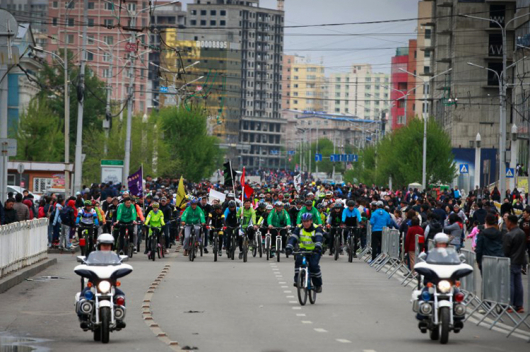In the capital, Ulaanbaatar, the government plans to build some 178 kilometers of bicycle lanes in the city center, as well as 70 bicycle parking lots outfitted with security cameras. Residents will also be able to register their bicycles with the traffic police. The city is planning to build bicycle roads in 16 locations; such as 177.9 km of bike lanes along Selbe, Tuul and Khul Rivers.
Building bike infrastructure has been challenging for Ulaanbaatar, where space is tight on many roadways and replacing parking or general traffic lanes has not been an easy sell. Also, cycling has traditionally not been a popular form of transportation in Mongolia. Poor road conditions – particularly wet, slippery and snow-covered roads in winter – can make cycling treacherous. Dedicated bicycle lanes are few and far between, leaving cyclists vulnerable to aggressive drivers. And the lack of secure parking has made bicycle theft a common concern.
Despite these challenges, bicycle ridership has increased dramatically during the pandemic – a trend echoed in many parts of the world. When the Mongolian government suspended public transportation and banned cars, buses and other motor vehicles from the roads during lockdowns, cycling became a convenient way for many Mongolians to shop for groceries and commute to work. The Ministry of Health also encouraged Mongolians to take up cycling as a way to exercise and improve their health.
 3,575.44
3,575.44












Related News